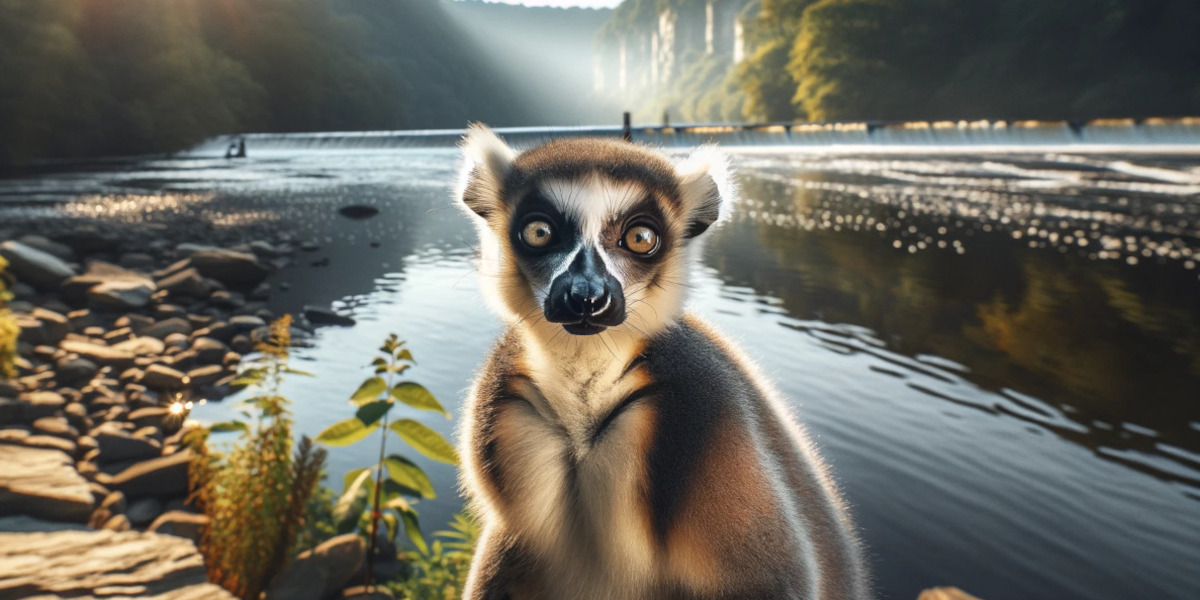
Introduction
Lemurs are charismatic primates that are best known for their distinctive appearance and their strong association with Madagascar, an island nation off the southeast coast of Africa. Lemurs display a range of interesting behaviors and adaptations, from their loud, echoing calls that reverberate through the dense forests to their social dynamics, which vary significantly across different species.
To address the question, “Do lemurs live in Pennsylvania?” The quick and straightforward is no. Lemurs are not native to Pennsylvania or any other part of the United States. They are indigenous to Madagascar and a few neighboring islands.
However, lemurs can be found in various zoos and wildlife conservation centers in Pennsylvania, where they are kept under human care for educational and conservation purposes. These facilities aim to copy the natural habitat of lemurs to the best of their ability, providing an insight into the lives of these fascinating creatures far from their original home.
Pennsylvania’s Wildlife and Ecosystem

Overview of Pennsylvania’s Natural Ecosystem
Pennsylvania hosts a wide range of ecosystems that are home to a variety of wildlife species. The state is known for its mountains, vast forests, numerous rivers, and extensive rural areas, each contributing to the ecological diversity.
The forests, covering over half of the state, contain species such as oak, maple, and hickory. These wooded areas provide a habitat for a wide array of wildlife, including white-tailed deer, black bears, bobcats, a variety of bird species, and an assortment of small mammals and reptiles.
In addition to the forests, Pennsylvania’s waterways, including major rivers like the Susquehanna and the Delaware, support distinct aquatic ecosystems. These rivers are vital for species such as brook trout, bass, and a variety of freshwater mussels. Wetlands and marshes in the state also serve as crucial habitats for amphibians, birds, and various plant species.
The state’s diverse ecosystems not only support native wildlife but also contribute to Pennsylvania’s natural beauty, offering a range of environments from the rugged mountain landscapes to the serene river valleys.
Presence of Non-native Species in Pennsylvania
Pennsylvania, like many regions, has seen the introduction of non-native species, some of which have successfully established themselves in the local ecosystems. These introductions have occurred through various means, including accidental releases, escape from captivity, or deliberate introductions for hunting or pest control.
One notable non-native species is the European starling, first introduced to North America in the 19th century and now widespread throughout Pennsylvania. These birds have adapted well to both urban and rural areas, often competing with native bird species for nesting sites and food resources.
Another example is the brown marmorated stink bug, originally from Asia, which has become a common sight in Pennsylvania. This insect, known for its distinctive odor when crushed, has become a significant agricultural pest, affecting a wide range of crops across the state.
In some cases, efforts have been made to control or manage these non-native species to mitigate their impact on native ecosystems and species. The presence of these non-native animals in Pennsylvania serves as a reminder of the delicate balance within ecosystems and the potential consequences of introducing foreign species into new environments.
Are There Lemurs in Pennsylvania?

Lemurs in the Wild vs In Captivity in Pennsylvania
When addressing the question of whether lemurs live in Pennsylvania, it’s crucial to distinguish between wild populations and those in captivity. In the wild, lemurs are native exclusively to Madagascar and a few surrounding islands and are not naturally found in Pennsylvania or anywhere else in the United States.
This geographical exclusivity is due to the unique evolutionary history of Madagascar, which has allowed lemurs and other similar species to thrive in isolation from major predators and competitors found on larger landmasses.
In Pennsylvania, however, lemurs can be found in captivity. Zoos, wildlife sanctuaries, and some private collections within the state hold various species of lemurs. These facilities are dedicated to the care, conservation, and sometimes breeding of these primates.
The environments in these settings are artificially created to emulate the natural habitats of lemurs, including controlled climates, specialized diets, and social groupings that mimic their wild counterparts. The presence of lemurs in these facilities plays a role in education, research, and conservation efforts, especially for species that are endangered or at risk in their native Madagascar.
Conservation and Legal Aspects of Lemurs Living in Pennsylvania
The legal framework surrounding exotic animals like lemurs in Pennsylvania is structured to balance animal welfare, public safety, and conservation concerns.
Pennsylvania has regulations in place that control the ownership, breeding, and transfer of exotic wildlife, which includes lemurs. Permits are often required for facilities to house these animals, and these permits come with strict guidelines regarding the animals’ care, housing, and overall well-being.
Conservation concerns are at the forefront when discussing lemurs in captivity. Many lemur species are classified as endangered or critically endangered due to habitat loss, poaching, and other human-related activities in Madagascar.
Zoos and sanctuaries in Pennsylvania play a vital role in global conservation efforts. By participating in international breeding programs and conservation research, these institutions contribute to the survival of lemur species and raise public awareness about the challenges facing these unique primates in the wild.
Conclusion
In conclusion, lemurs do not naturally live in the wild in Pennsylvania. Their presence in Pennsylvania is limited to zoos, sanctuaries, and certain controlled environments. This distinction highlights the significant difference between their native ecosystems and the artificial habitats created for them in captivity.
The presence of lemurs in Pennsylvania’s captive settings serves an important purpose. It underscores the broader issues of wildlife conservation and environmental stewardship. These facilities not only provide a home for lemurs but also play a crucial role in education and conservation efforts, raising awareness about the challenges facing these remarkable animals in their native habitats.
The legal and ethical considerations surrounding the keeping of exotic animals like lemurs in Pennsylvania reflect a growing consciousness about the responsibilities involved in wildlife management and conservation.




